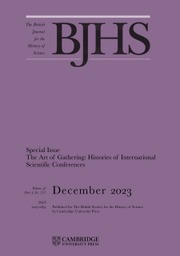Aficionados of electronic music likely associate the genre with Germany: Stockhausen’s 1950s serial sine tones at Cologne’s Studio for Electronic Music; 1960s Krautrock of Amon Düül II et al.; Kraftwerk’s poppy 1970s synthesisers; post wall-fall beats of Berlin’s techno. The author of Broadcasting Fidelity, Myles Jackson, historian of science at the Institute for Advanced Study in Princeton, frequented Berlin techno clubs, which become his portal into a history of electronic music experimentation in Germany and the first electro-acoustic instrument, the Trautonium.
Broadcasting Fidelity is a comprehensive history of electronic sound generation for music, drawing together early radio technologies, the quest for distortionless broadcasting, historical discussions about transmissible music and radiophonic composition, and the impact of political contexts. In the conclusion, Jackson states that he used two pieces of material culture, early German radio and the Trautonium, to piece together bits of culture that some might consider unrelated. In relation to these twin objects, he builds links among musical aesthetics; theories and practices in physiological, physical and electrical engineering; techniques of electronic music; and the role of politics. Contained within is a study of an inventor, Friedrich Trautwein, and of an instrument, which today has but one sole expert player and is destined for the instrument graveyard of the music museum. The Trautonium emerged from a pioneer experimental spirit and, through the radio, conveyed innovative sounds into homes. As Jackson expounds in meticulous detail, this involved a complex of inventors, scientists, experimenters, visionaries, engineers, physicists, sensory physiologists, linguists, musicologists, sound artists, music academies and the electrical industry.
The study begins with a depiction of early radio in the Weimar Republic. A concert broadcast on 29 October 1923 marked the opening of the Berlin radio station, first of many regional stations, each more or less open to experimenting with the possibilities of the medium. Jackson spins many technical and aesthetic questions, clarifying how much push there was to innovate. For example, the Berlin radio experimental laboratory, described as a condensation point for electrical engineering, radio research and electrical music, provided microphones, loudspeakers and amplifiers for play. Trautwein, a lecturer in music from 1929, tinkered at the radio lab. Born in Würzburg in 1888, he trained in electrical engineering at the Technical University in Karlsruhe, studied law and physics and joined the Reich Post Ministry after the First World War. Through its telegraph service, he helped set up Berlin radio. From 1930 to 1933 he perfected his own invented instrument, the Trautonium.
Books about music are frustratingly silent. Yet it is possible to listen online to many examples of Trautonium music, largely from the past. One hears the resistor wire pressed into a metal plate at different points to adjust pitch and produce any note or microtone. One perceives the different amounts of pressure producing sliding sounds or vibrato and the effects of the foot pedal controlling volume from two filters. One may not be aware that inside the instrument are neon tubes, just like those that defined the Weimar era of night-time entertainment and all-day commerce. The Trautonium, Jackson explains, went through several versions, including for domestic use, radio and concerts. Its most celebrated associates were Oskar Sala and Paul Hindemith, who composed specifically for it. Sala developed the instrument after the Second World War to produce fractionalized subharmonies and wave mixing.
Jackson’s book sets broadcasting and electronic music within the wider framework of National Socialism’s rise, highlighting the differing fates of Hindemith’s music (cast as degenerate) and Sala’s (which he performed on his portable Trautonium throughout Germany with Nazi entertainment organization Kraft durch Freude). Trautwein joined the NSDAP in 1933 and provided acoustics for political rallies and other mass events. To think about that shift, as Jackson does, is to open questions around how technologies and formats developed in one context and location become adapted to another. Jackson extends the narrative into the post-war years, passing through the Trautonium’s and Sala’s most illustrious moment: the concoction of a soundscape of flapping wings for Hitchcock’s 1963 film The Birds.
A painful episode for the device – perhaps its death knell – is outlined. The founders of the Cologne Studio for Electronic Music rejected the Trautonium. Despite efforts to overcome mutual hostility arising from an amassing of patent disputes, enmity was confirmed in aesthetic divisions between, on the one hand, studio founder Werner Meyer-Eppler, Stockhausen’s teacher at the University of Bonn, and, on the other, Trautwein and Sala. The latter believed that the player–performer had an important interpretive role. The former prized electronic instruments’ capacity to generate pure sine waves. In manipulating the sound material directly, the performer was said to be rendered superfluous. The Moog synthesizer won out more widely in the end.
In Jackson’s hands, technological histories are intricate combinations of politics, aesthetics, techniques, philosophies, science. The title, Broadcasting Fidelity, exemplifies the complexity of this layered, media-archaeological approach. Fidelity had many meanings over the century, even just in the 1920s. For radio listeners, it meant differentiating between instruments and hearing the cadences of voice and sound effects in radio dramas. Composers considered fidelity in relation to how instruments interact with broadcasting, rather than concert halls. Radio engineers aimed for a quality called Naturtreue, ‘truth to nature’. Objective measures of timbre fostered debates about voices on air, particularly around women’s voices. Building on studies by Hermann von Helmholtz, advocates of fidelity demonstrated how each vowel is characterized by harmonic overtones. Emulating vowel sounds with tuning forks, analysing them electrically and converting sound waves into electrical waves, they laid the groundwork for the telephone. Fidelity derived from truth to the voicework of the human instrument.
Every book about the past is written into the present. Jackson closes with a glance at a SynthGPT prank and Paul McCartney using AI singing voice generators. He muses on what futures were opened up, which are foreclosed already, and what is yet to come with electro-acoustic sound.


